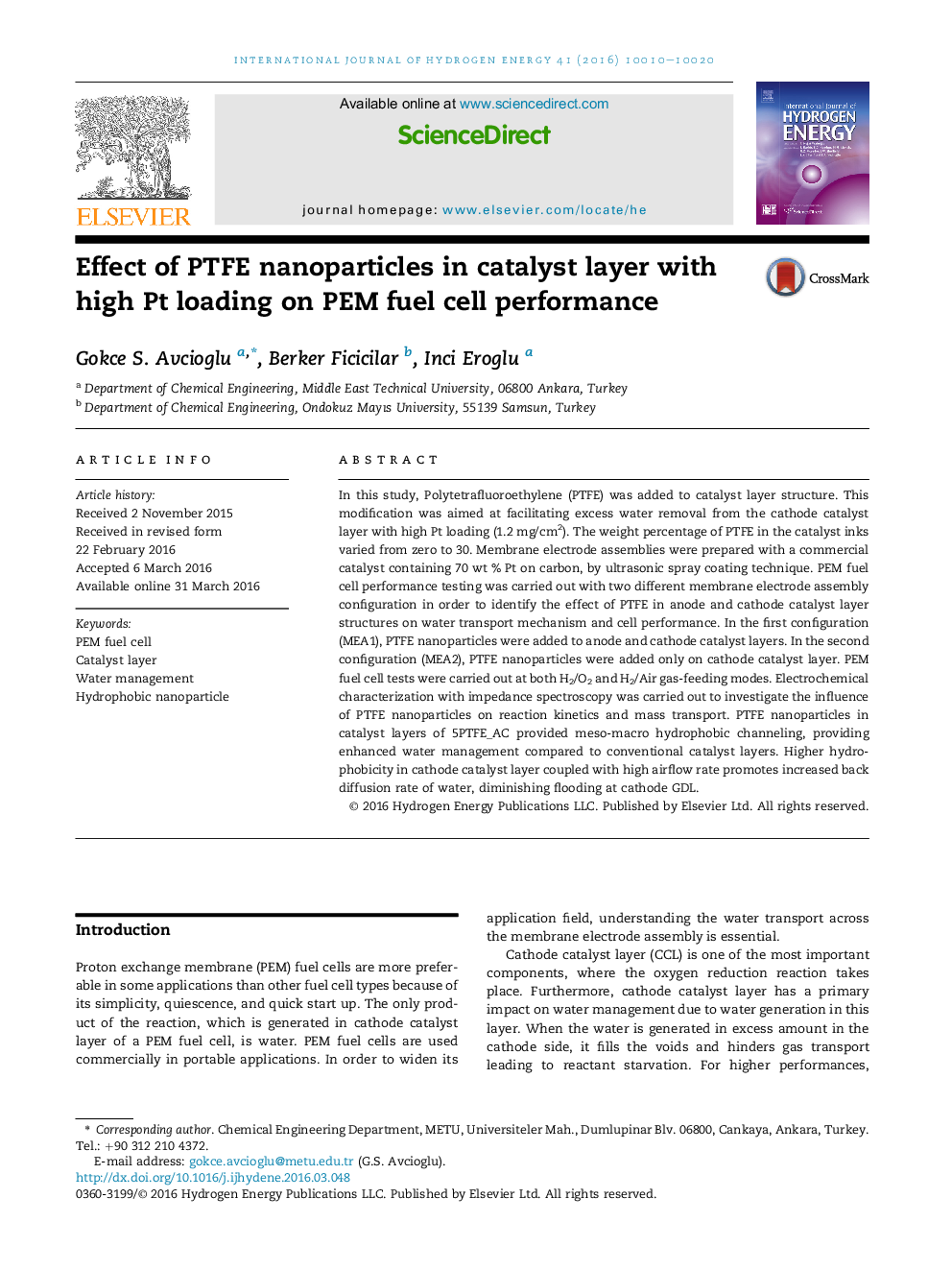| Article ID | Journal | Published Year | Pages | File Type |
|---|---|---|---|---|
| 1277054 | International Journal of Hydrogen Energy | 2016 | 11 Pages |
•2-step ink preparation method enhances performance with steam-annealed catalyst agglomerates.•Pt percentage in the commercial catalyst has a great impact on Pt utilization for PTFE included catalyst layers.•Lower amount of PTFE in catalyst layers promotes enhanced water management compared to conventional catalyst layers.•High airflow rate promotes increased back diffusion rate of water, diminishing flooding at cathode GDL.
In this study, Polytetrafluoroethylene (PTFE) was added to catalyst layer structure. This modification was aimed at facilitating excess water removal from the cathode catalyst layer with high Pt loading (1.2 mg/cm2). The weight percentage of PTFE in the catalyst inks varied from zero to 30. Membrane electrode assemblies were prepared with a commercial catalyst containing 70 wt % Pt on carbon, by ultrasonic spray coating technique. PEM fuel cell performance testing was carried out with two different membrane electrode assembly configuration in order to identify the effect of PTFE in anode and cathode catalyst layer structures on water transport mechanism and cell performance. In the first configuration (MEA1), PTFE nanoparticles were added to anode and cathode catalyst layers. In the second configuration (MEA2), PTFE nanoparticles were added only on cathode catalyst layer. PEM fuel cell tests were carried out at both H2/O2 and H2/Air gas-feeding modes. Electrochemical characterization with impedance spectroscopy was carried out to investigate the influence of PTFE nanoparticles on reaction kinetics and mass transport. PTFE nanoparticles in catalyst layers of 5PTFE_AC provided meso-macro hydrophobic channeling, providing enhanced water management compared to conventional catalyst layers. Higher hydrophobicity in cathode catalyst layer coupled with high airflow rate promotes increased back diffusion rate of water, diminishing flooding at cathode GDL.
